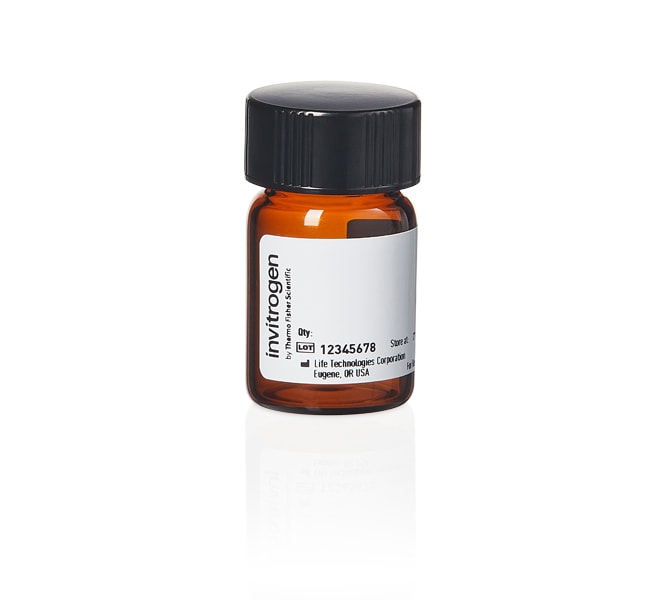Search Thermo Fisher Scientific

Estreptavidina
| Número de catálogo | Cantidad |
|---|---|
| 434302 | 5 mg |
| 434301 | 1 mg |
Capacidad: Se determina que la actividad de unión de la estreptavidina es > 11 unidades por mg de proteína. Una unidad de actividad de unión se define como la cantidad de proteína que une 1 µg de biotina (Green, N.M., Biochem. J., 89:599,1963)
Forma: la estreptavidina se suministra en forma liofilizada en solución salina tamponada con fosfato de 10 mM, pH 7,4. Reconstituir con 1 ml de agua destilada o desionizada.
Almacenamiento: Almacenar a 4 °C.
Para uso exclusivo en investigación. No apto para uso en procedimientos diagnósticos.
Los clientes que vieron este artículo también vieron
Documentos y descargas
Certificados
Hojas de datos de seguridad
Product Information
Preguntas frecuentes
This Streptavidin is a native protein from Streptomyces avidinii, therefore there are no His-tags on it.
Streptavidin is a protein composed of four identical subunits, each containing a high affinity binding site for biotin (K-D = 10 -15 M) . Streptavidin has the same biotin binding properties as avidin, but it has a low isoelectric point (pI=5) and no carbohydrate groups, resulting in low non-specific binding.
Find additional tips, troubleshooting help, and resources within our Protein Assays and Analysis Support Center.
Although we utilize manufacturing methods that minimize the introduction of any contaminants such as RNases, we do not process this product to specifically remove or inactivate RNases and do not test for RNase activity.
Find additional tips, troubleshooting help, and resources within our Cell Analysis Support Center.